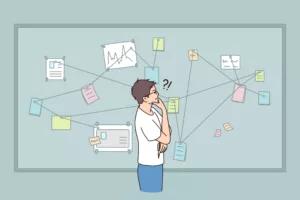One of the major hurdles that ChatGPT presents to anyone who writes curriculums is also something they should be thinking about anyway: how do we make our assessments more meaningful, useful, and relevant for our students? This goal is called Authentic Assessment, and it’s a puzzle that educators have been working on for at least the past twenty years. An authentic assessment is one which measures a student’s skills and knowledge in a way that is tailored to their circumstances, lifestyle, and prospective career aspirations. They are often tasks or activities that mirror what might be found in the workplace, therefore requiring the student to directly apply their learnings in a practical context. ChatGPT has led to a resurgence in interest in this kind of assessment, and while essays will always have their place (especially in disciplines where writing skills and critical thinking are needed), authentic assessment styles build student skills in more relevant ways. Do we need all students responding to the same few questions? Can we instead give them more autonomy over their learning, and, therefore, become more engaged and deliver responses that are more authentic to themselves?
The other opportunity that ChatGPT brings to the education space is as a tool for developing, testing, and improving the kinds of assessments we talked about above. For example, students studying education might be given a task to mark an essay that ChatGPT has written. We could present ChatGPT with an assessment we’ve developed and ask for ways that different student personas might approach it, so we can ensure all students are assessed fairly. If we’re designing authentic assessments for an industry we’re not immersed in ourselves, ChatGPT can be a great resource for finding authentic scenarios to use in building those assessments. Generative AI is a massively flexible tool that’s currently being overshadowed by its impact on essay writing, when there are potentially hundreds of opportunities to use it to grow and assist educational workers.
The educational industries have had something of a jumpscare over the past few months with the emergence of AI writing. But while there are a number of challenges presented by this new technology, we as an educational tech company are seeing exponentially more opportunities. It will take time, and a lot of research and discovery on the pedagogical side, for generative AI tools like ChatGPT to be properly integrated into our industries. But once we become attuned to how to take the most advantage of the tools it gives us, ChatGPT will become core to the way we teach. I believe it.




